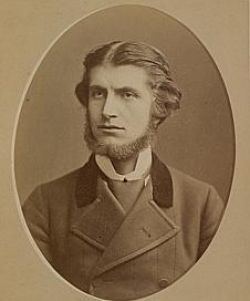Terry Abraham
Information from Dr. Terry Abraham's obituary, found here.
Terry Abraham “was born Oct. 6, 1944, in Portland, Ore., the second son of Frederick E. and Marion A. Abraham. A book and history lover from a young age, he earned his Bachelor of Fine Arts degree from the University of Washington in 1965, a Master of Fine Arts degree from Washington State University in 1968, and a Master of Library Science from the University of Oregon in 1970. That same year, he also earned a certificate in archival librarianship from UO.
"Terry's 37-year career included stints at Washington State University, the California Historical Society and finally the University of Idaho, where in 2005 he retired as a professor and head of special collections and archives after 21 years of service. He actively supported the national community of archivists and librarians, serving as a program officer for the National Endowment for the Humanities, a projects editor for the Society of American Archivists and a member of the Idaho Humanities Council Speakers Bureau. He was a founding member and former officer of Northwest Archivists.
"On April 24, 1992, Terry married Priscilla Wegars, historical archaeologist and founder of the UI's Asian American Comparative Collection. They were life partners in every sense, sharing similar educational backgrounds, personal and intellectual interests, a good sense of humor and a grand sense of adventure. They truly were best friends.
"Terry and Priscilla shared an abiding and keen interest in the history of the Pacific Northwest, particularly the roles and lives of the Chinese in the region. They collaborated on numerous publications on the topic, including "Chinese Cemeteries and Burial Practices in the Pacific Northwest," a chapter in Alta Mira Press's "Chinese American Death Rituals: Respecting the Ancestors." Terry also wrote "Mountains So Sublime: Nineteenth Century British Travellers and the Lure of the Rocky Mountain West," a book published in 2005 by University of Calgary Press. In 2007, he won a coveted Esto Perpetua ("Let It Be Perpetual") award from the Idaho State Historical Society.”
























